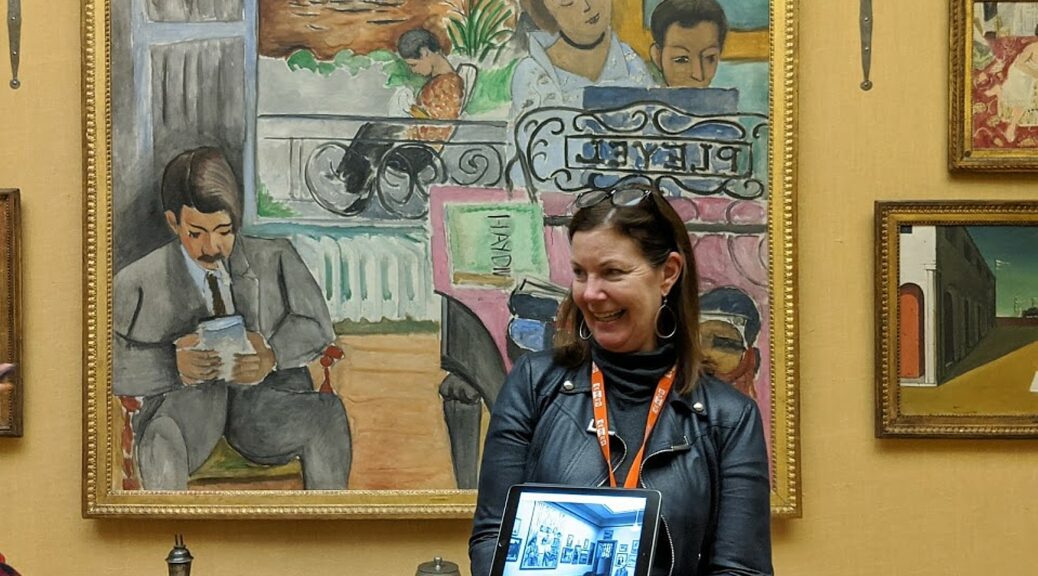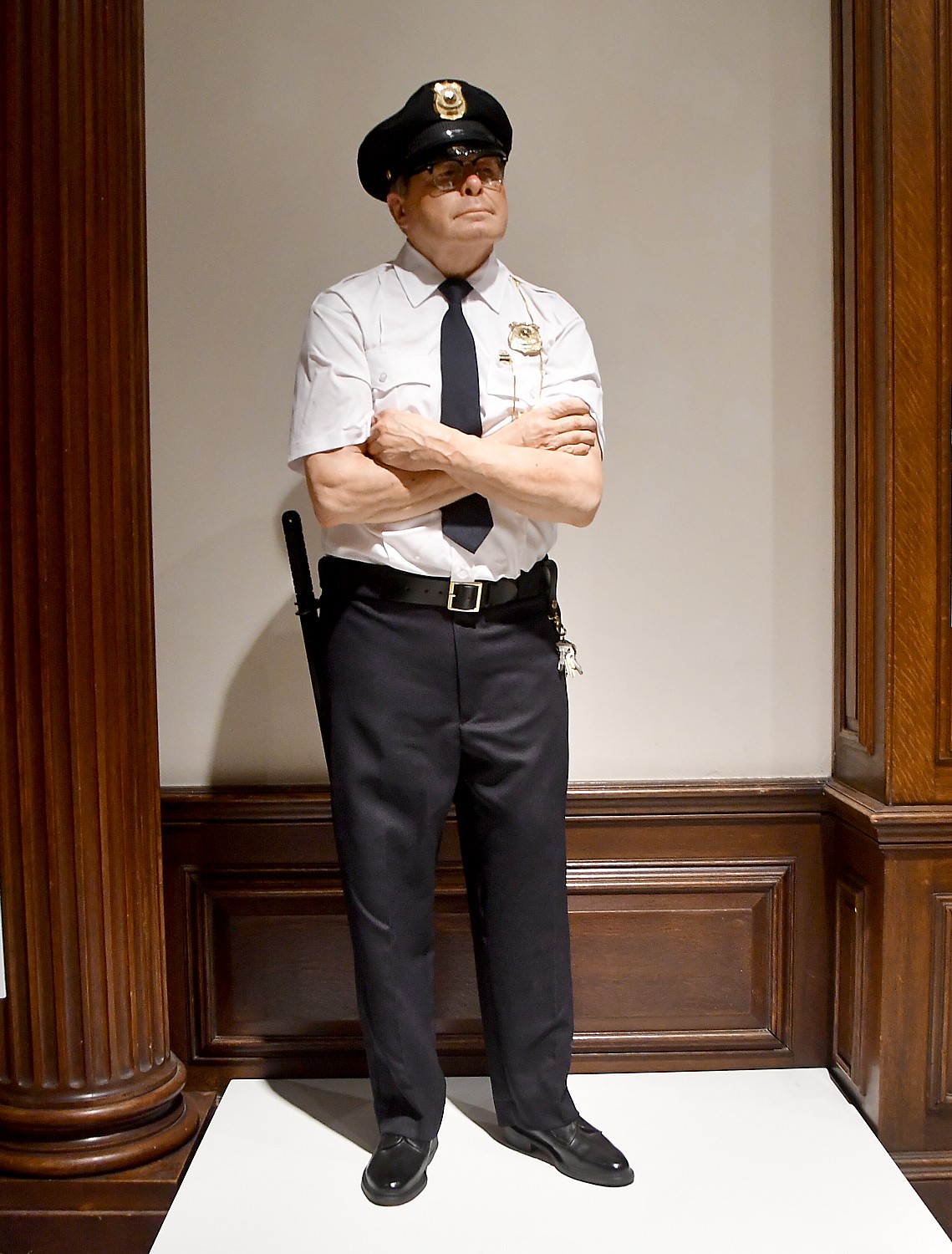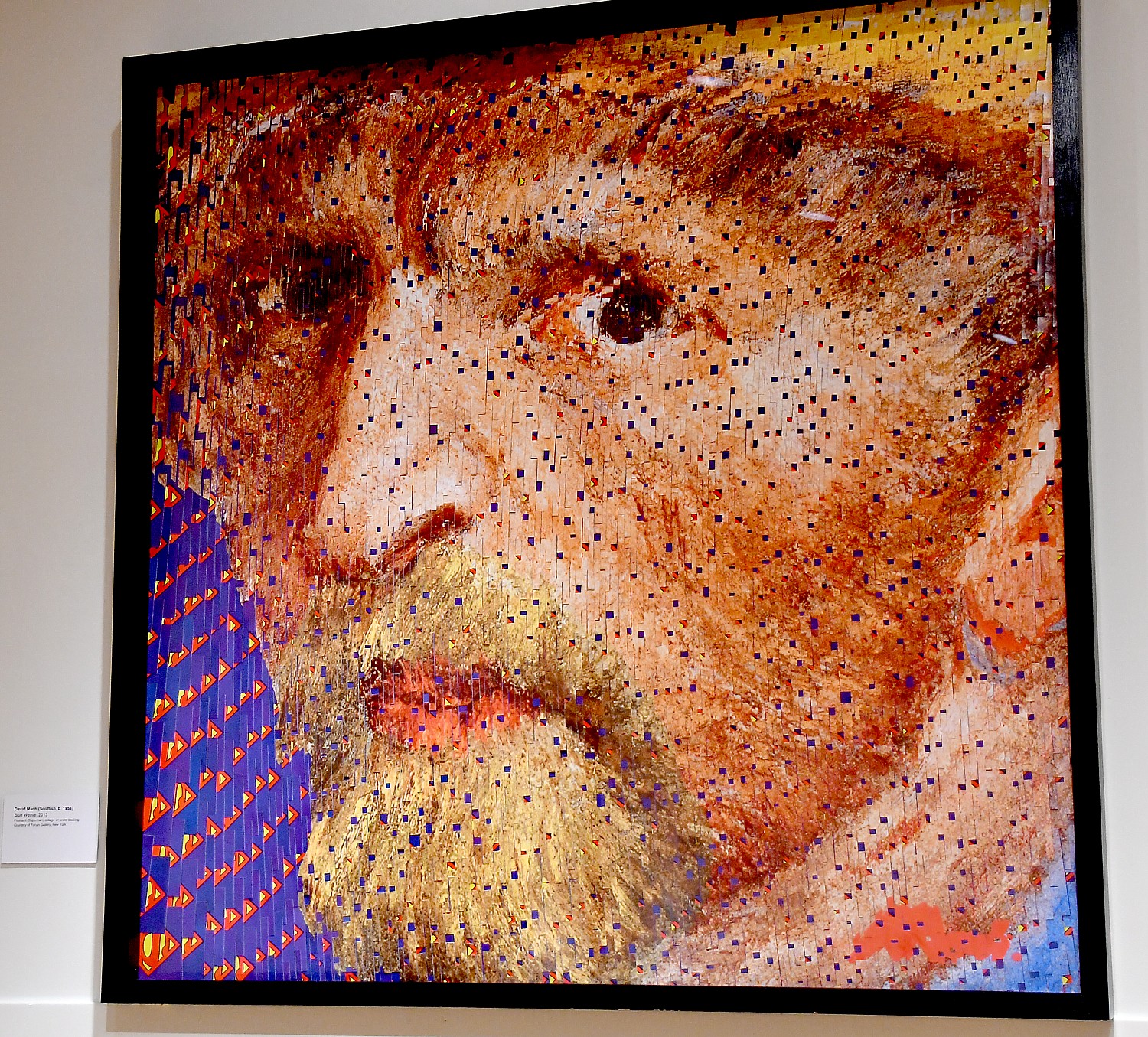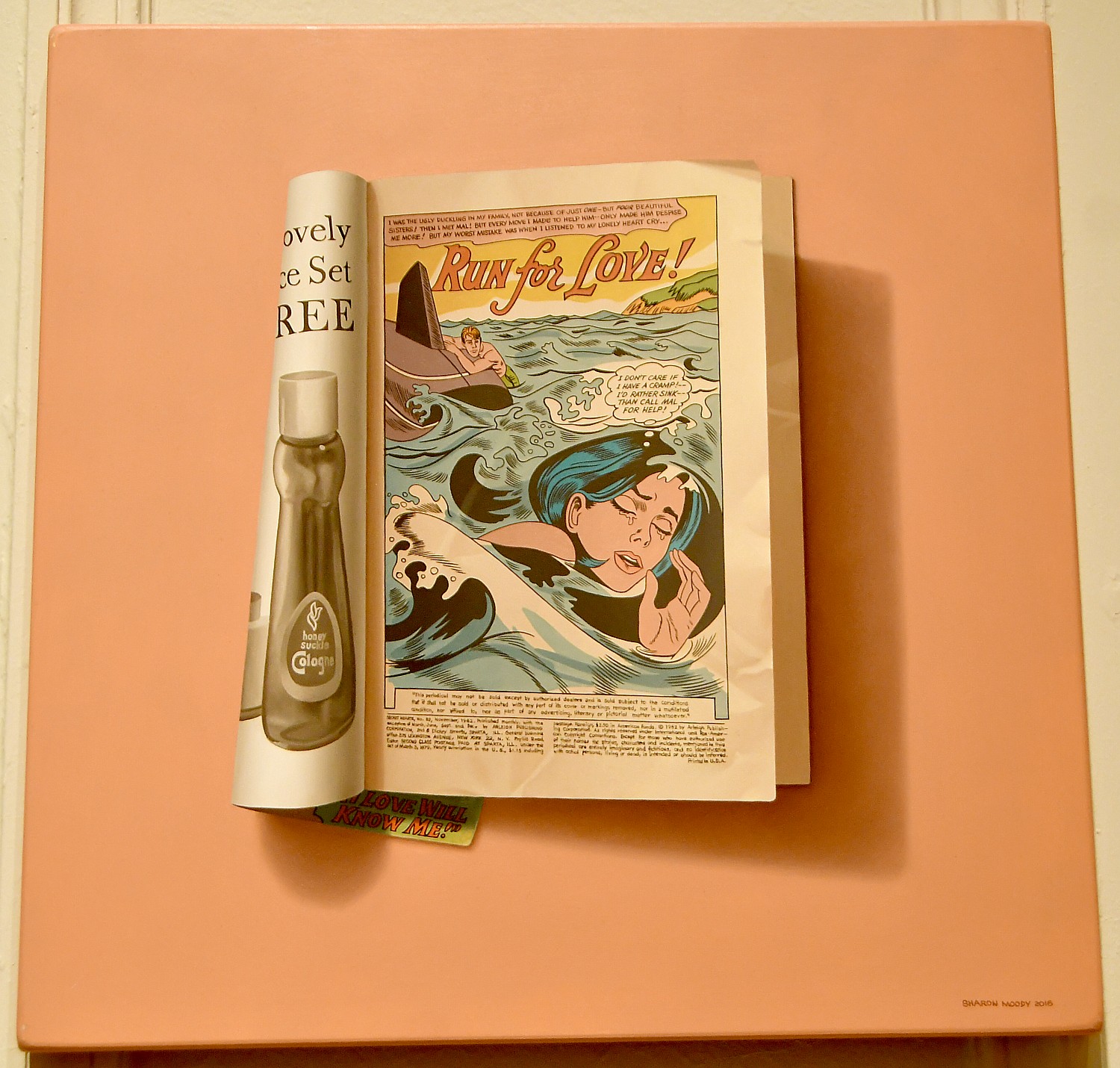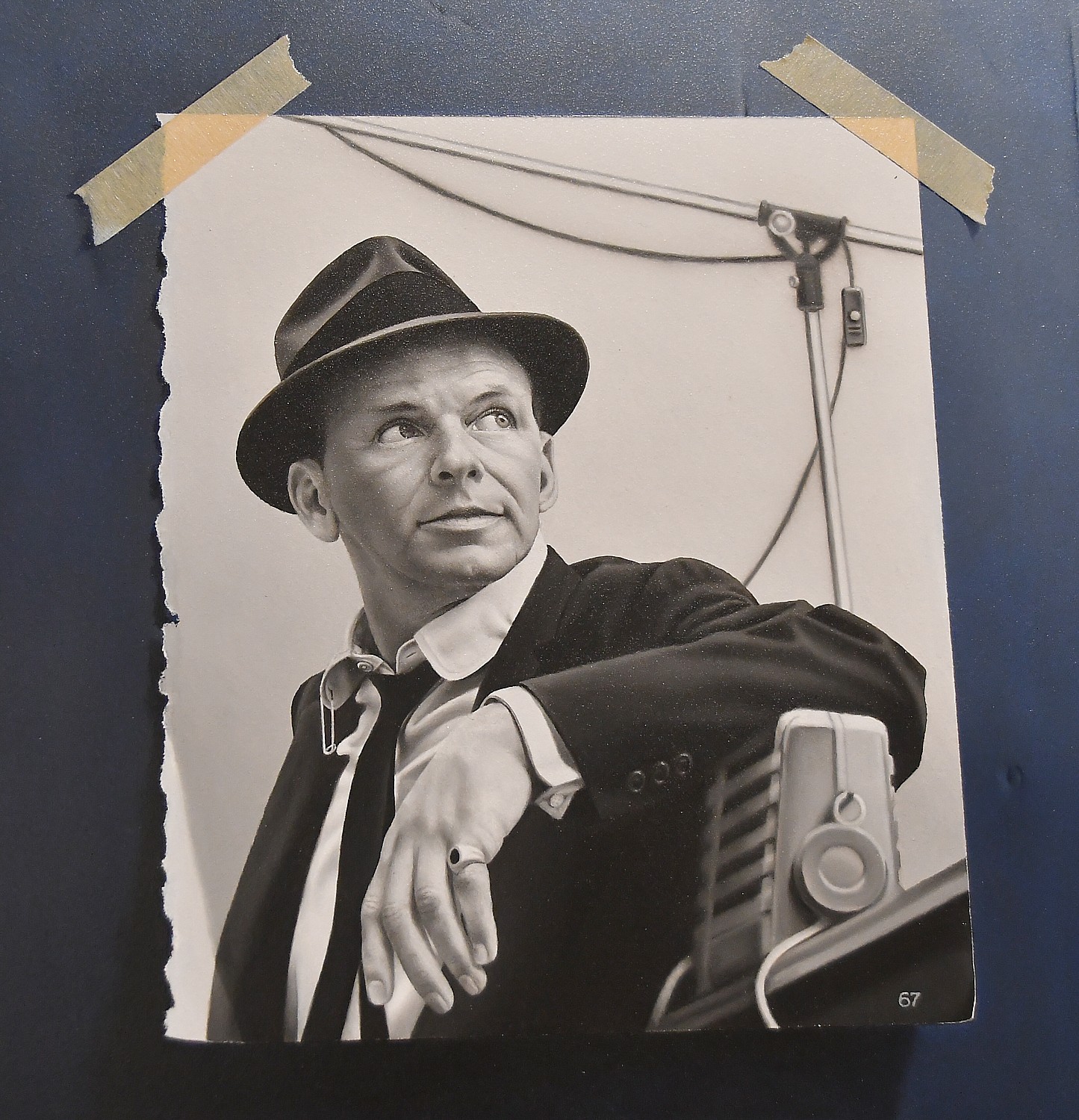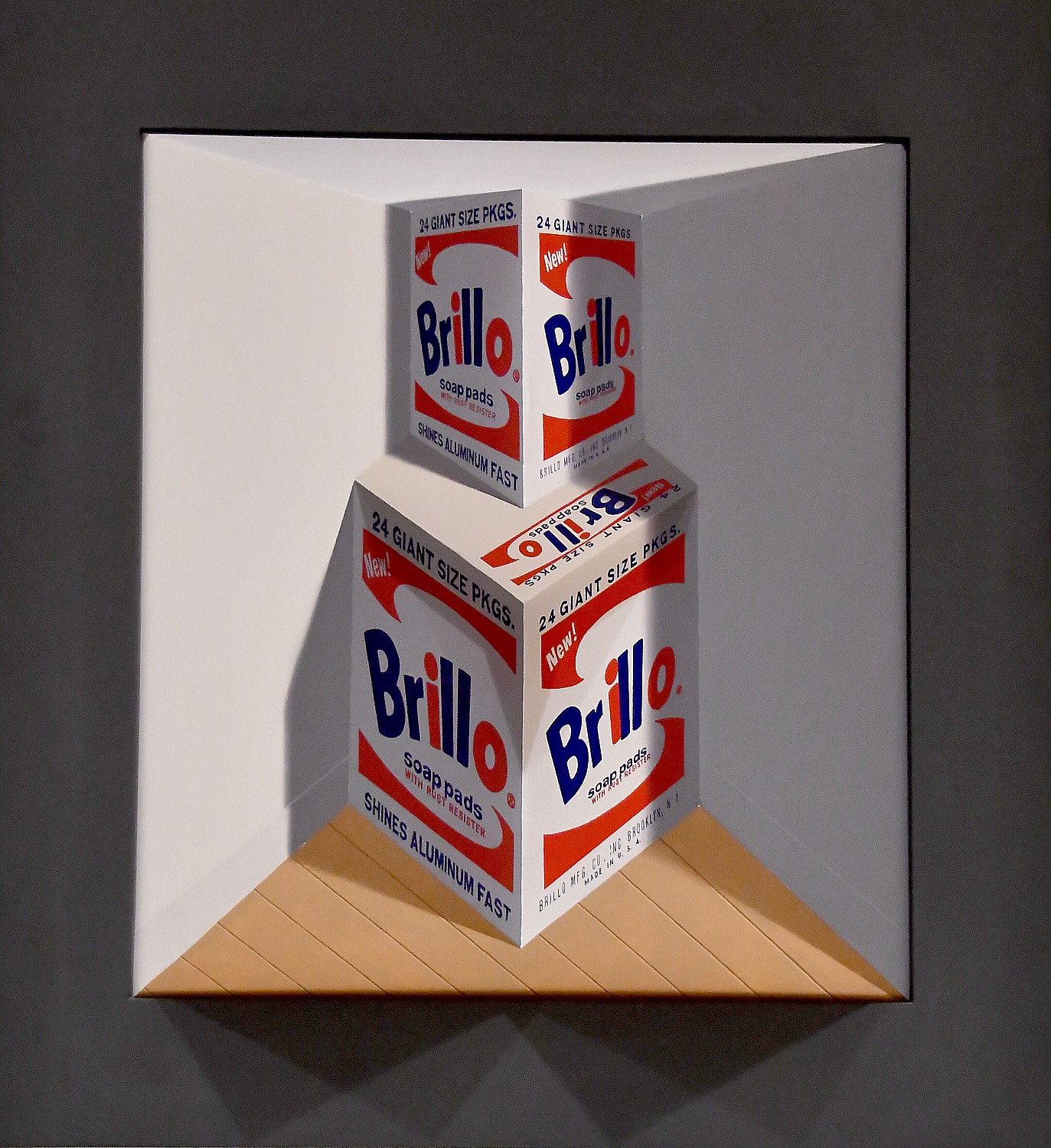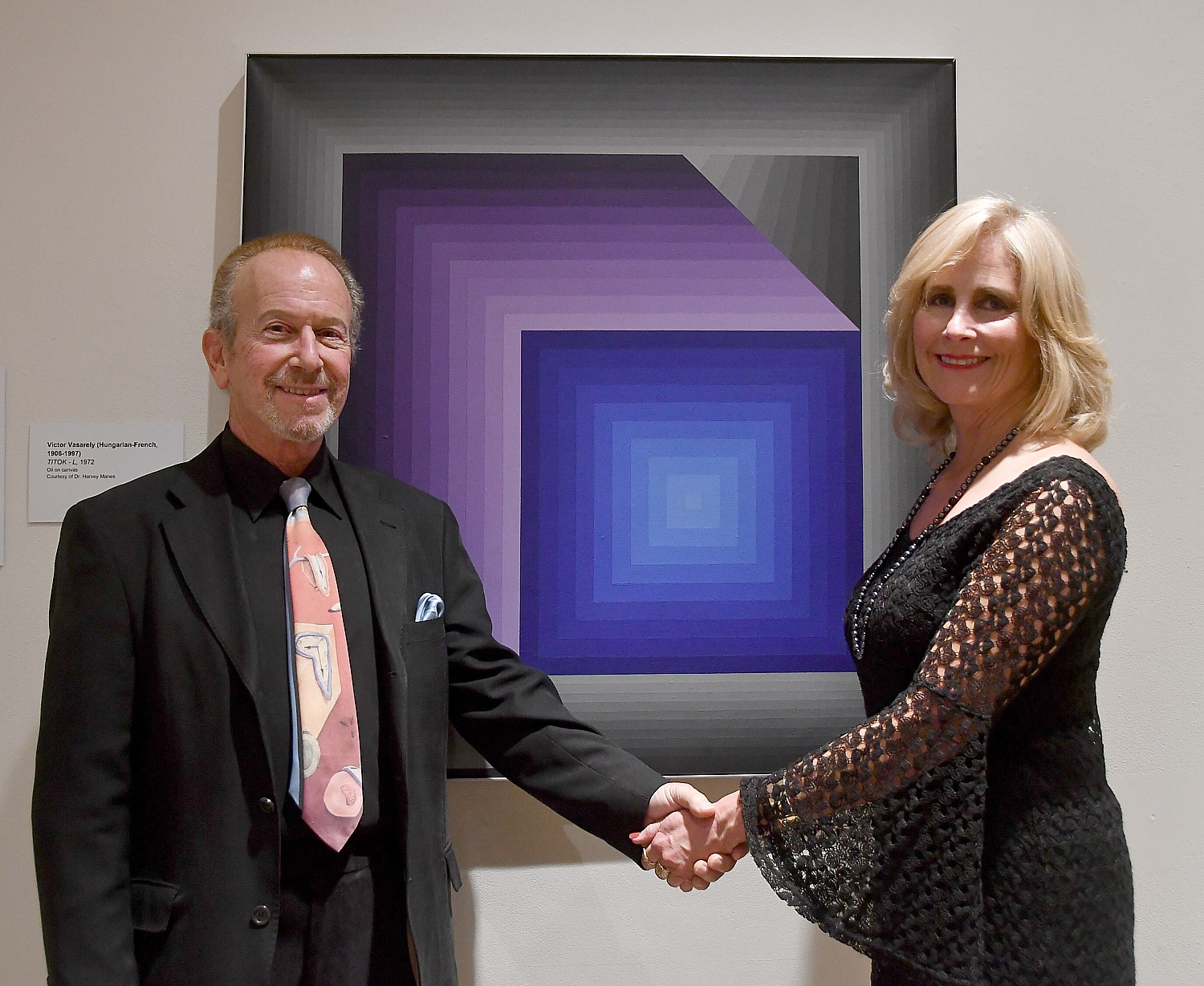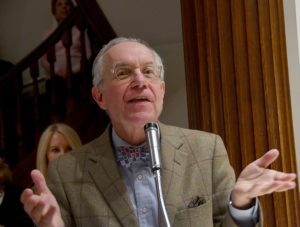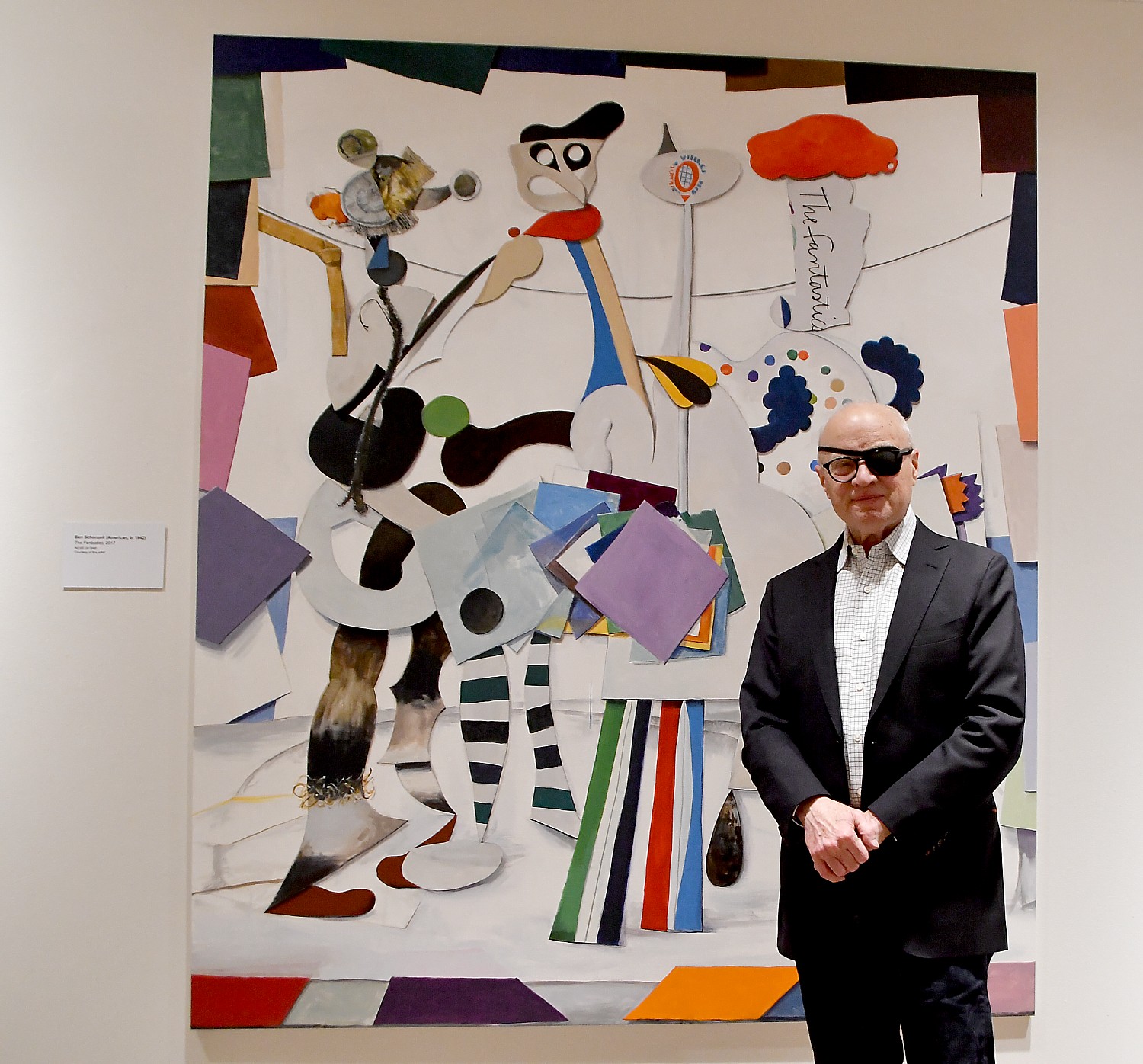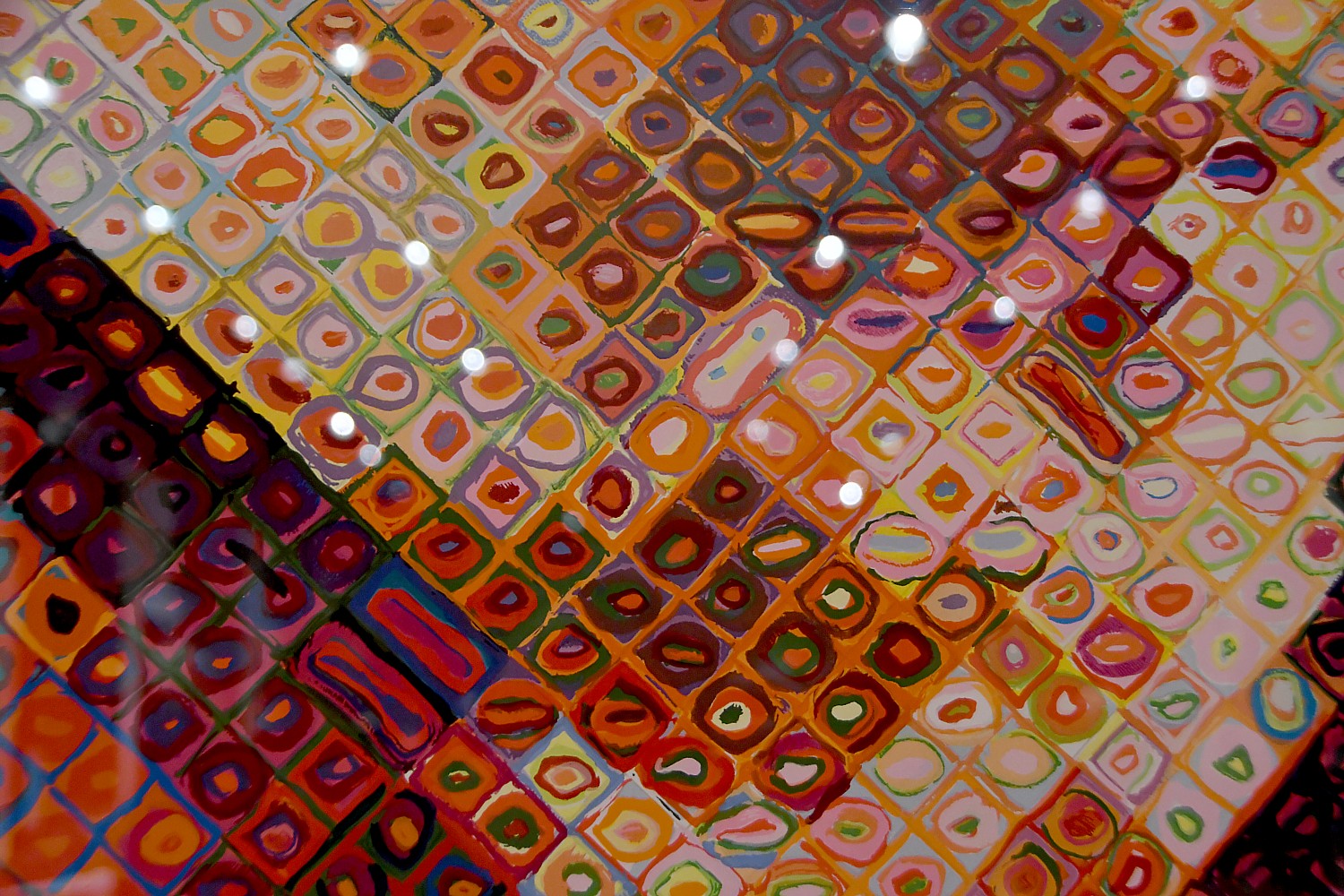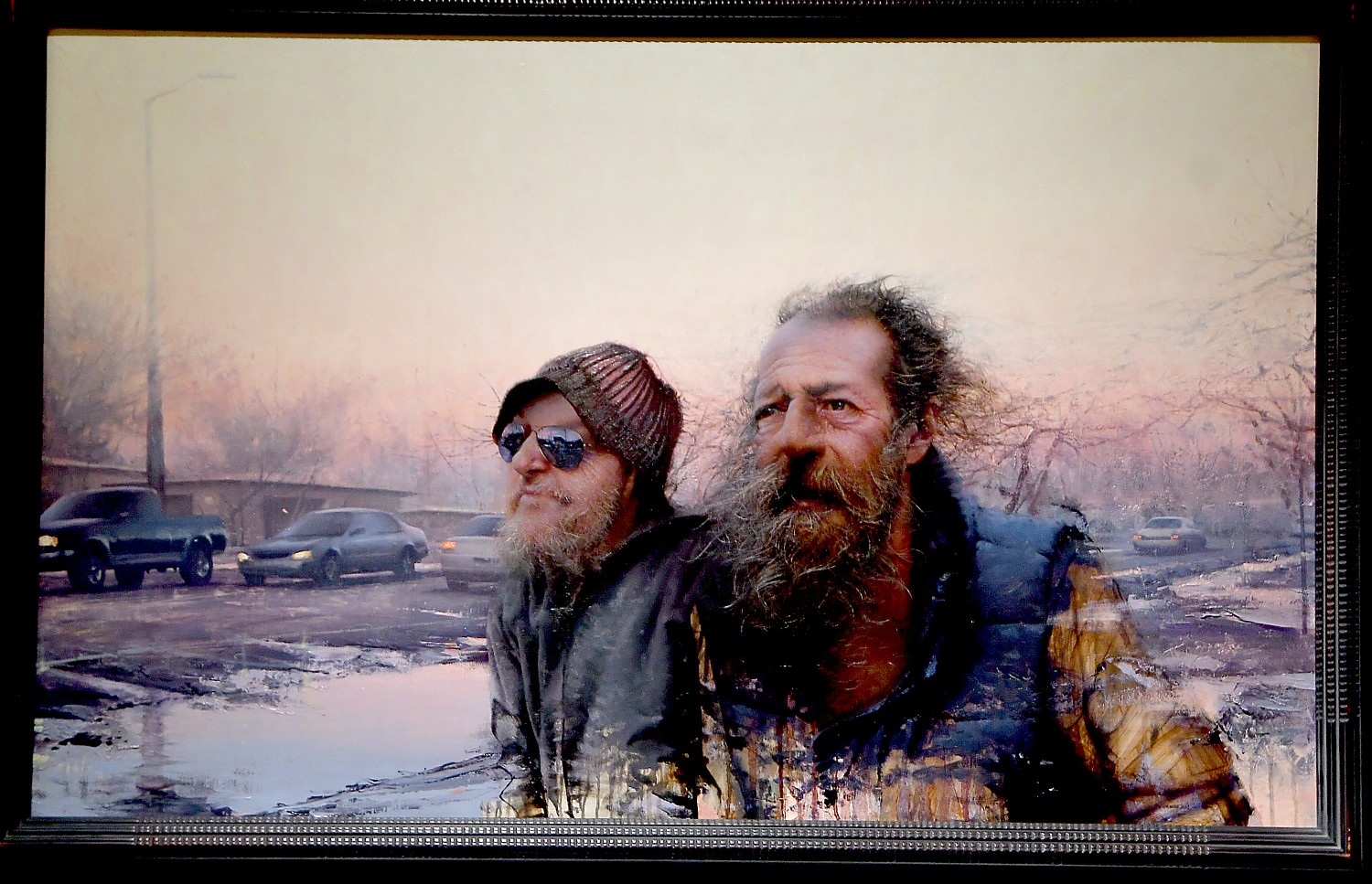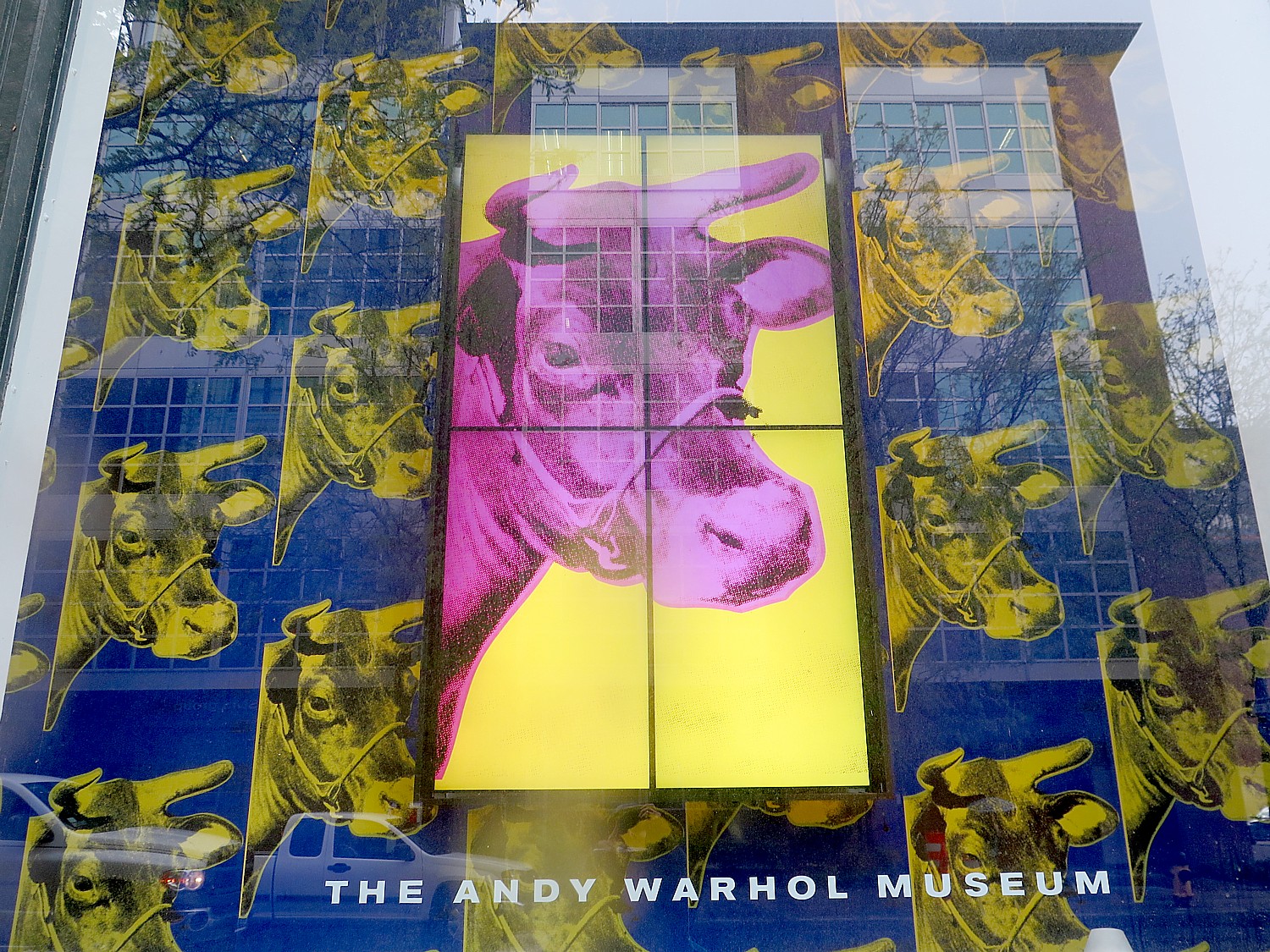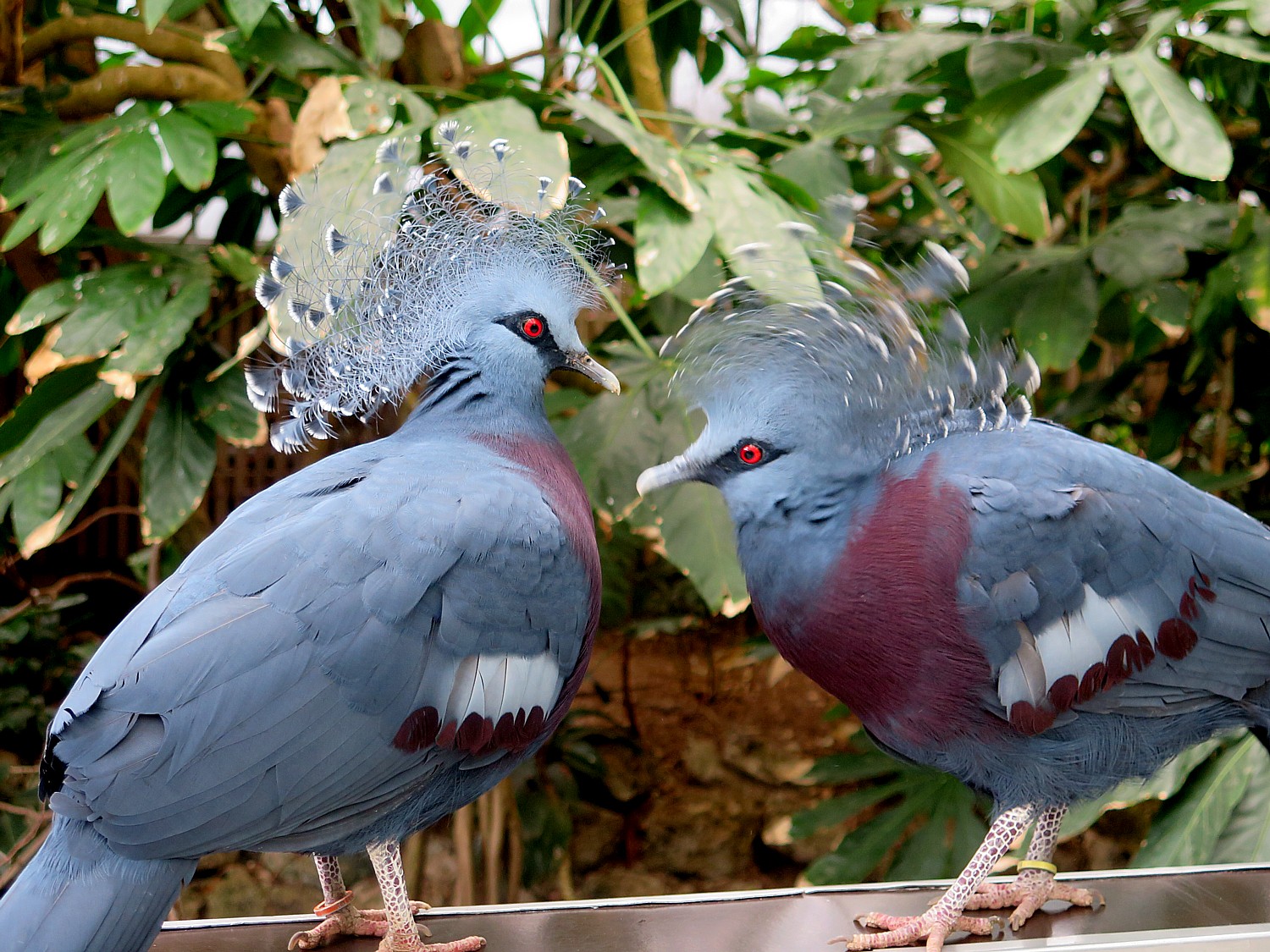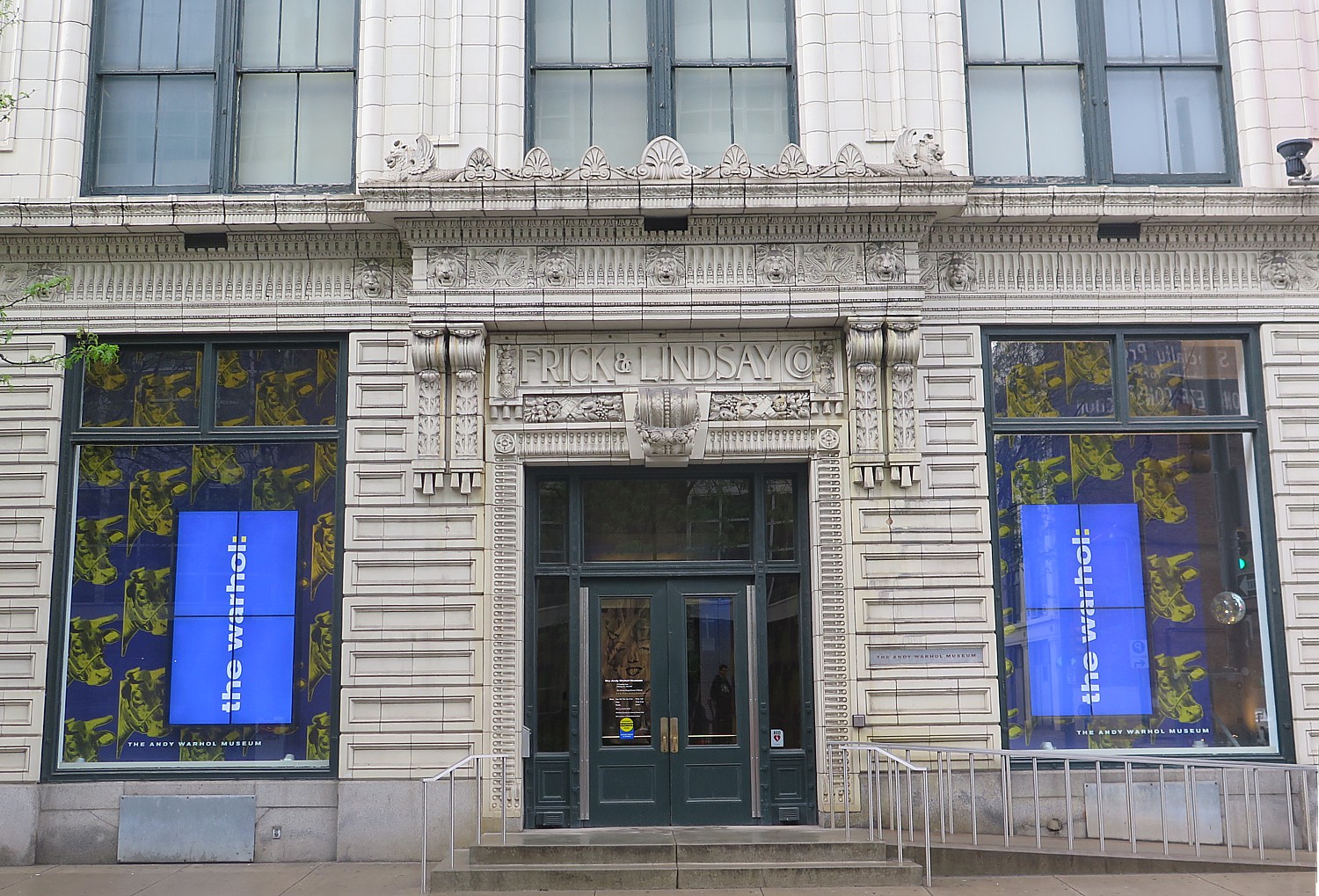
by Karen Rubin, Travel Features Syndicate, goingplacesfarandnear.com
Philadelphia is a jewel box of unique and spectacular, even life-enhancing attractions, a trove of national treasures of history, heritage, culture that glitters particularly during the holidays. The holiday splendor is eye-catching and warms the heart, but any visitor still has to make time to experience first-hand at least some of these iconic places. I manage to bookend my holiday merrymaking with a mix of art (Barnes Foundation, Philadelphia Magic Gardens) with history (Independence Hall) with heritage (National Museum of American Jewish History) with science and enlightenment (Philly is the hometown of one of our most enlightened inventors, Ben Franklin, and so I end this visit with the Franklin Institute.
Barnes Collection
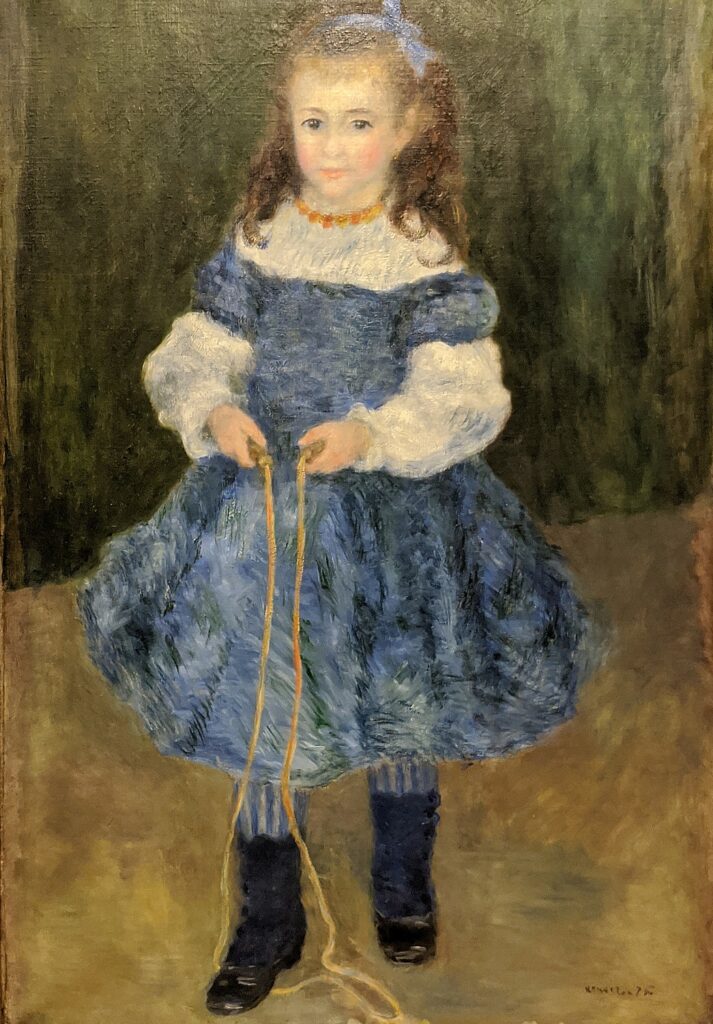
We spare no time once we drop our luggage at The Roost East Market, park the car in the garage, but grab an Uber to race over to The Barnes Foundation. The Barnes Collection is one of the world’s greatest collections of impressionist, post-impressionist, and early modernist paintings, with especially rich holdings in Renoir, Cézanne, Matisse, and Picasso. Assembled by Dr. Albert C. Barnes between 1912 and 1951, the collection also includes important examples of African art, Native American pottery and jewelry, Pennsylvania German furniture, American avant-garde painting, and wrought-iron metalwork. In fact, we are told, Dr. Barnes has the greatest collection of Renoir anywhere – 181 of them acquired by Dr. Barnes between 1921 and 1942 that you actually see (as opposed to museums that keep most of their collections in storage). Plus 69 by Paul Cézanne; 59 by Henri Matisse; 46 by Pablo Picasso; 21 by Chaim Soutine; 18 by Henri Rousseau and the list goes on and on, as you walk from gallery to gallery to gallery.
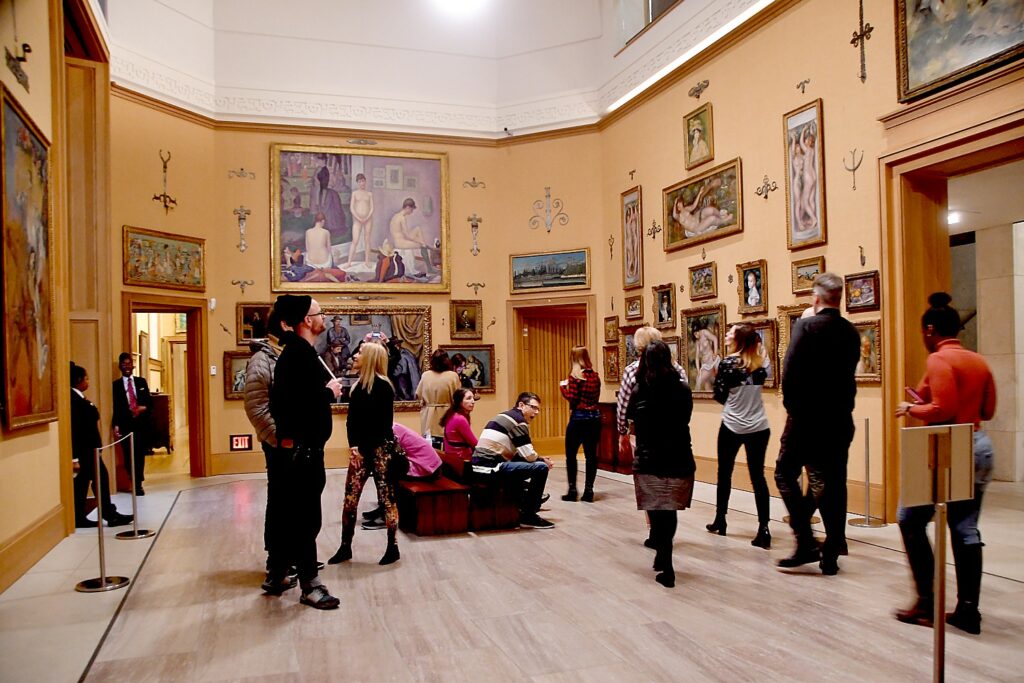
The building complex is new, but the gallery rooms re-create the rooms and how Dr. Barnes displayed his art, intentionally juxtaposing masterworks by Vincent van Gogh, Henri Matisse and Pablo Picasso next to ordinary household objects – a door hinge, a spatula, a yarn spinner; a French medieval sculpture displayed with a Navajo textile; African folk art with Modigliani and Cubists. Dr. Barnes called these dense groupings of objects from different cultures, time periods and media his “ensembles.” He meticulously crafted the ensembles to draw out visual similarities – even the source of inspiration. He meant them as teaching tools, essential to the educational program Dr. Barnes developed in the 1920s.
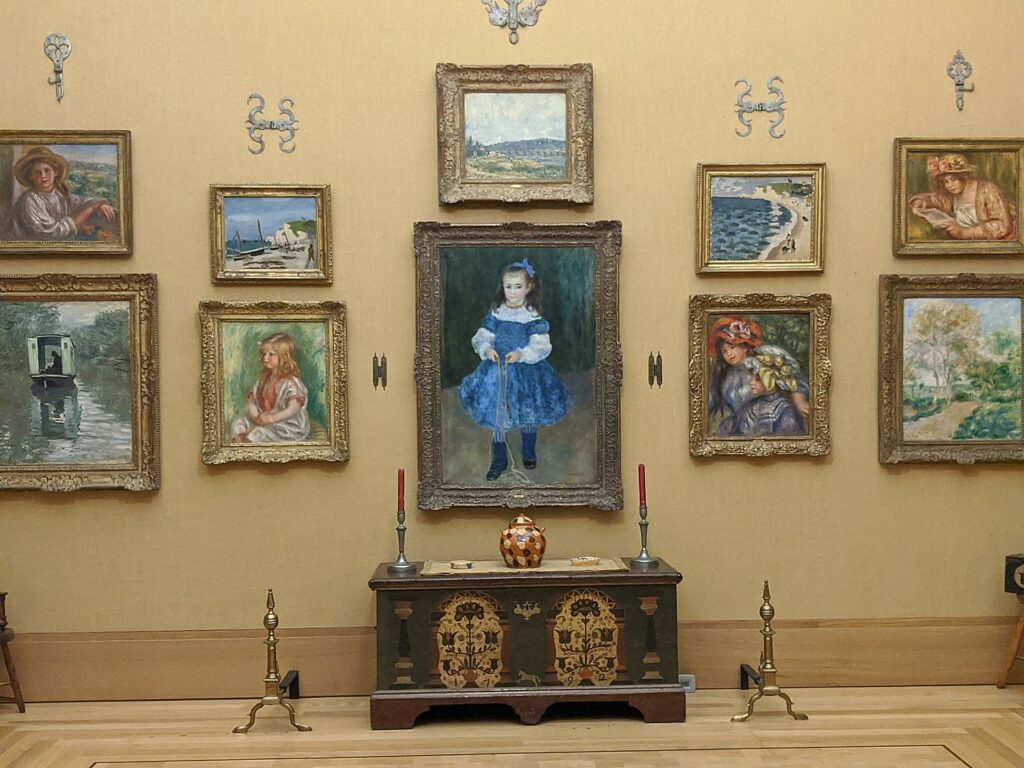
“He believed you could as likely learn about how to do surgery wandering through a hospital as art wandering through a gallery – you have to be taught how to see, what to look for,” a docent explains. “He wanted people to appreciate how culture influences art.” She adds, “He wasn’t an artist himself.” In fact, she relates, 10 years ago, Central High School (Dr. Barnes grew up in a working class family in Philadelphia), came across his school books. “He got A’s in everything but art.”
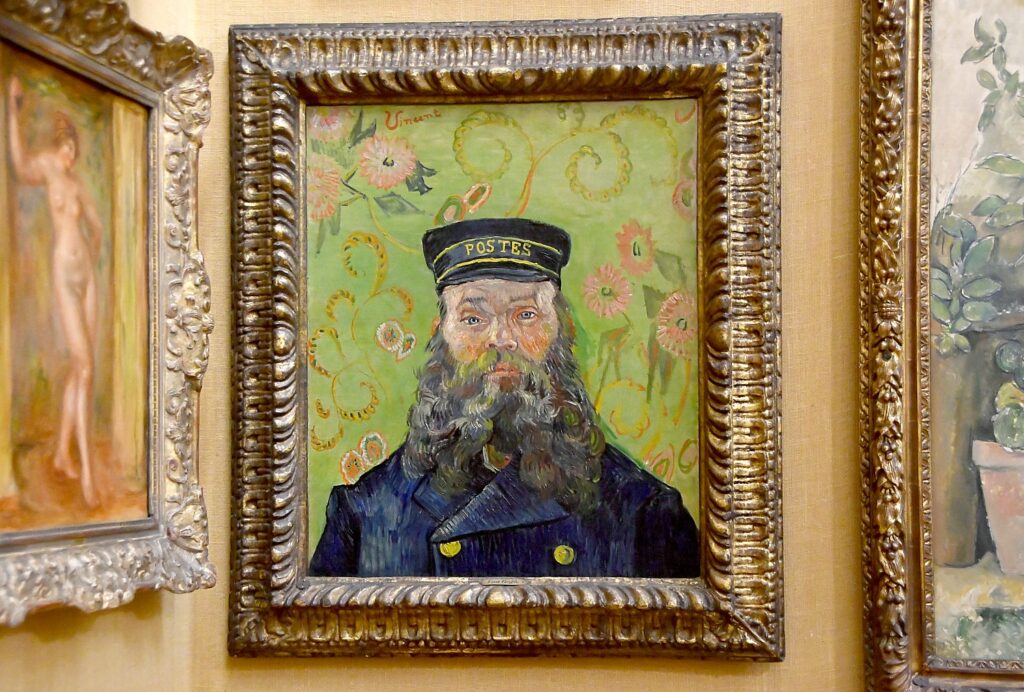
At the Barnes, you experience these masterworks in the most intimate manner, as if visiting a home (albeit a mansion). We are exceptionally lucky to visit when the museum is not at all crowded (actually we are there until closing) – I even get to have some of the art completely to myself. It is very comfortable to view – many of the rooms (and they seem to go on forever, one after another) are small and there is seating in each one, with guides to the artwork at hand. But you should try to take a docent tour. At one point, the docent pulls up a photo of Henry Matisse, sitting on the very bench and gazing at his own painting in that very room.

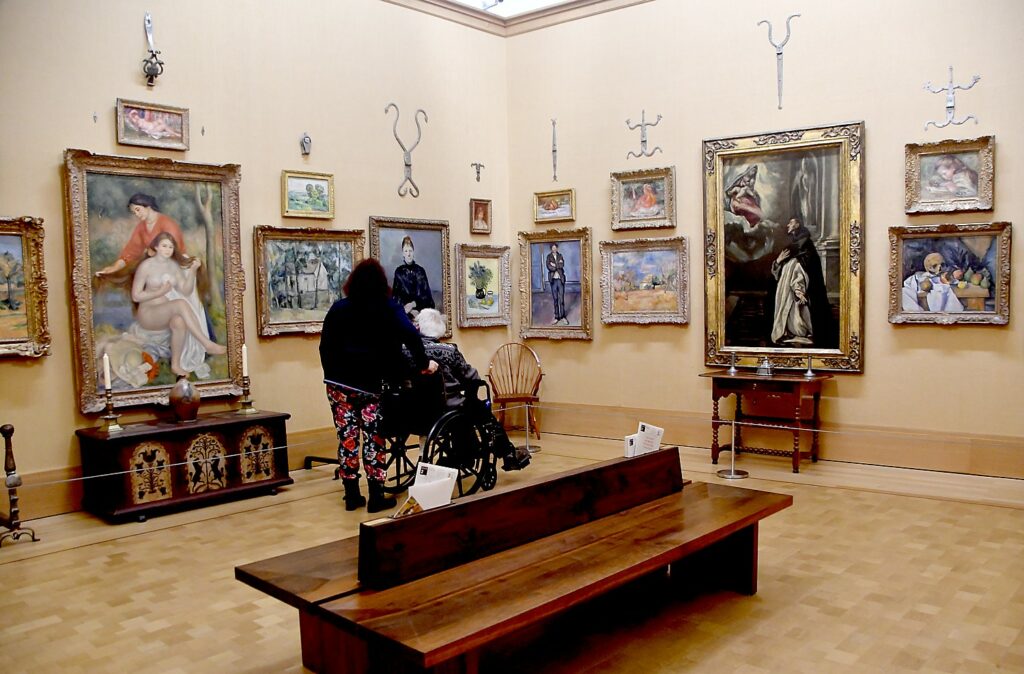
In every room, you are astonished to see art that is amazingly familiar – because they are so famous: Georges Seurat’s “Models” (the basis for “Sunday in the Park with George”); Vincent Van Gogh’s “The Postman”; Paul Cezanne’s “The Card Players”; Edouard Manet “Laundry”; Pablo Picasso “Acrobat and Young Harlequin”, and a plethora of Renoirs – so many, you get a sugar high. Every gallery takes your breath away, and for that moment, the art, the masterpiece, is yours.
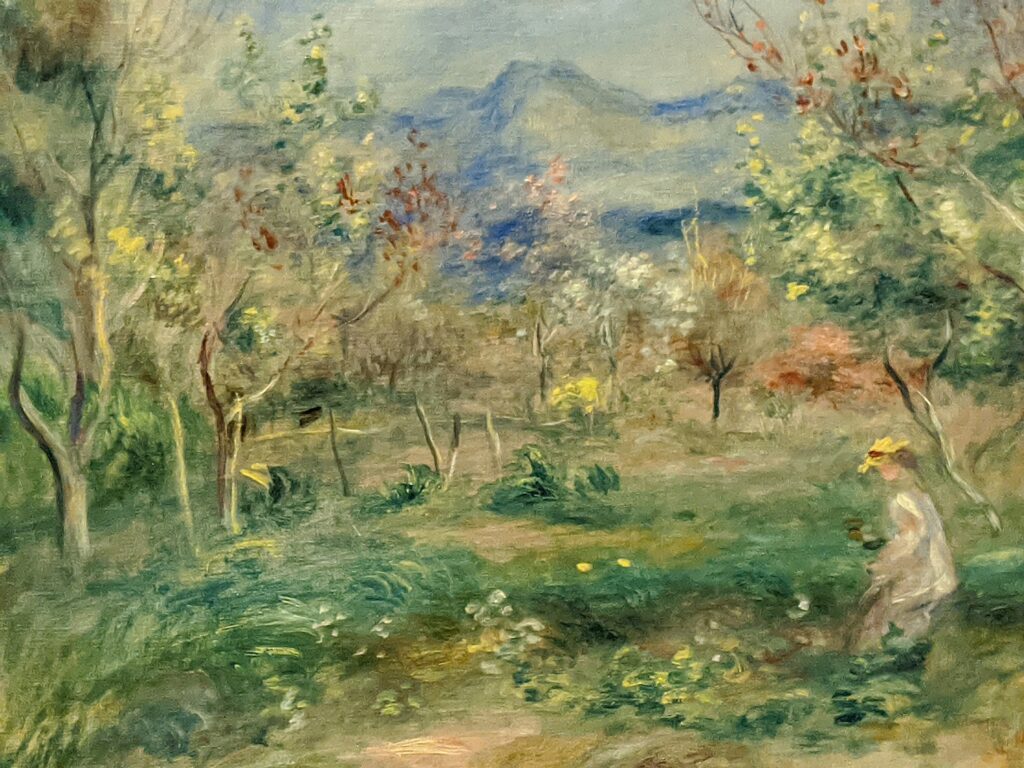
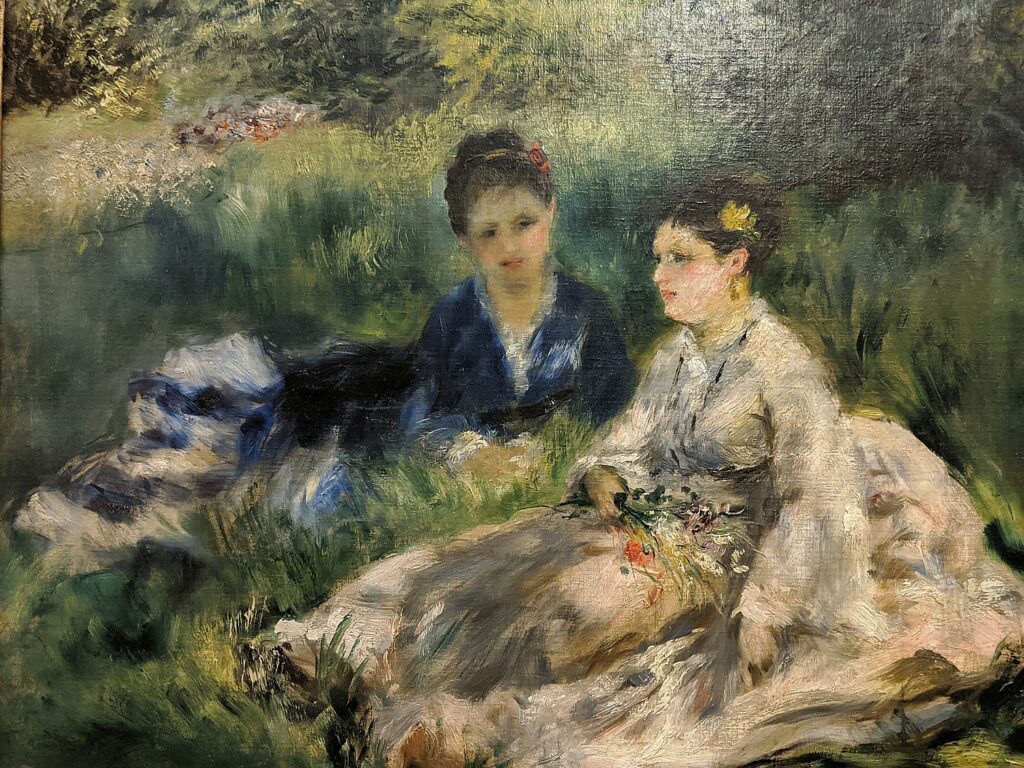
And then there are the surprises – the art and artists you “meet” for the first time. I fall in love with a Van Gogh country scene I have never seen before.
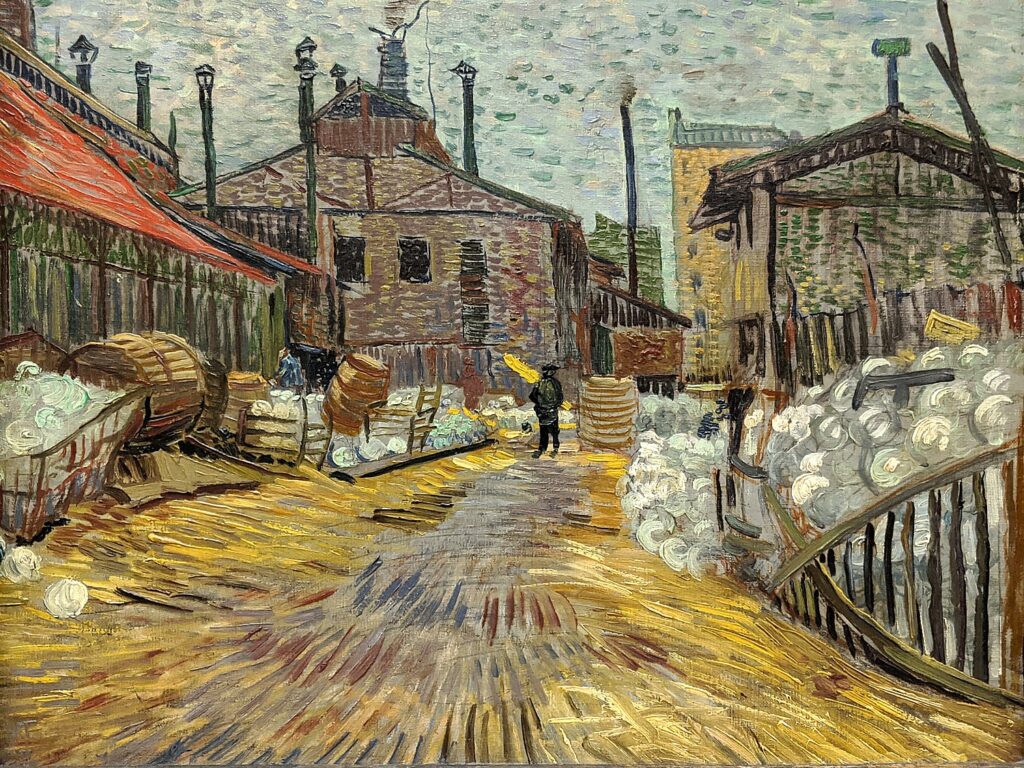
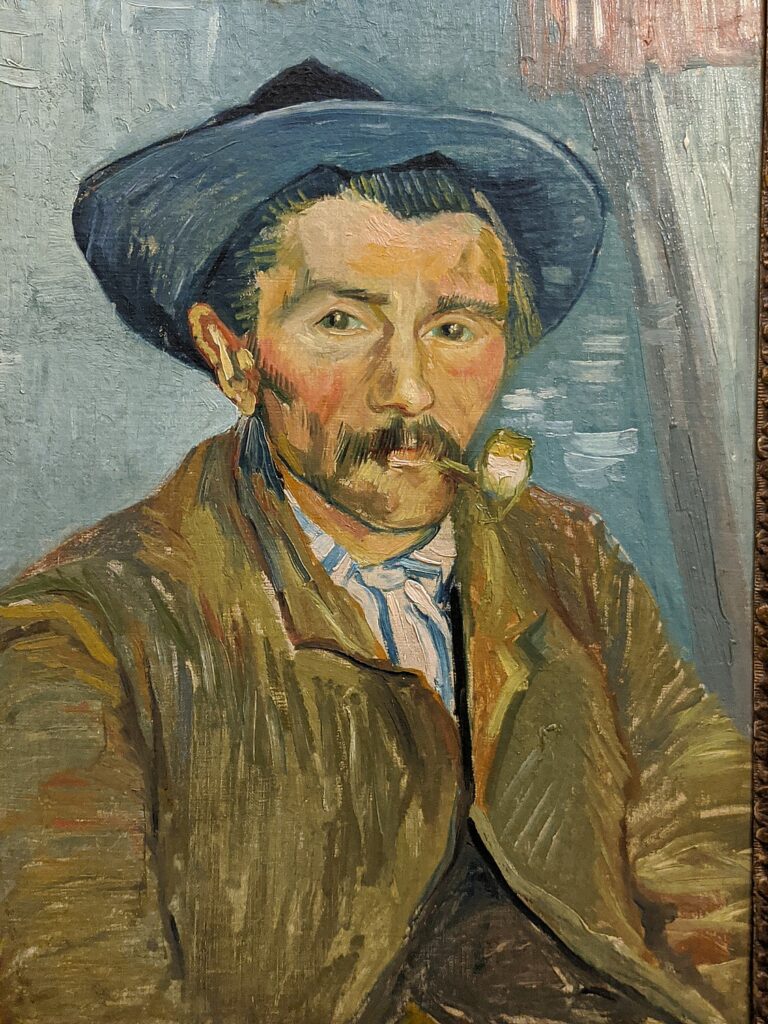
There is a wonderful painting of Dr. Albert Barnes (1872-1951) by Giorgio de Chirico (1926), which makes you wonder more about who he was to have assembled such an astonishing collection. Dr. Barnes was born and raised in working-class Philadelphia, earned a medical degree from the University of Pennsylvania and went on to study chemistry in Germany. After starting his own business and making a fortune in pharmaceuticals, he began collecting art.
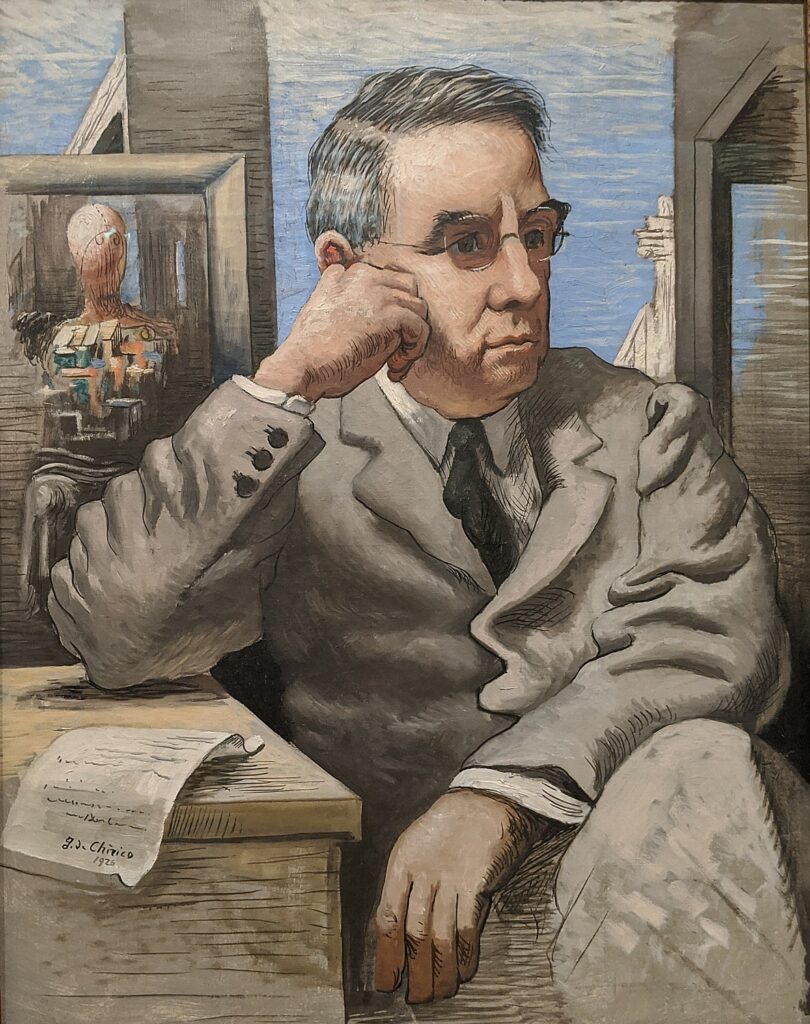
“Dr. Barnes believed that art had the power to improve minds and transform lives,” the notes read. “In 1922, he established the Barnes Foundation as a school for learning how to see and appreciate art. He had a gallery built in Merion, a suburb of Philadelphia, to house his growing collection. He held classes in the gallery so that students could learn directly from the artworks.”
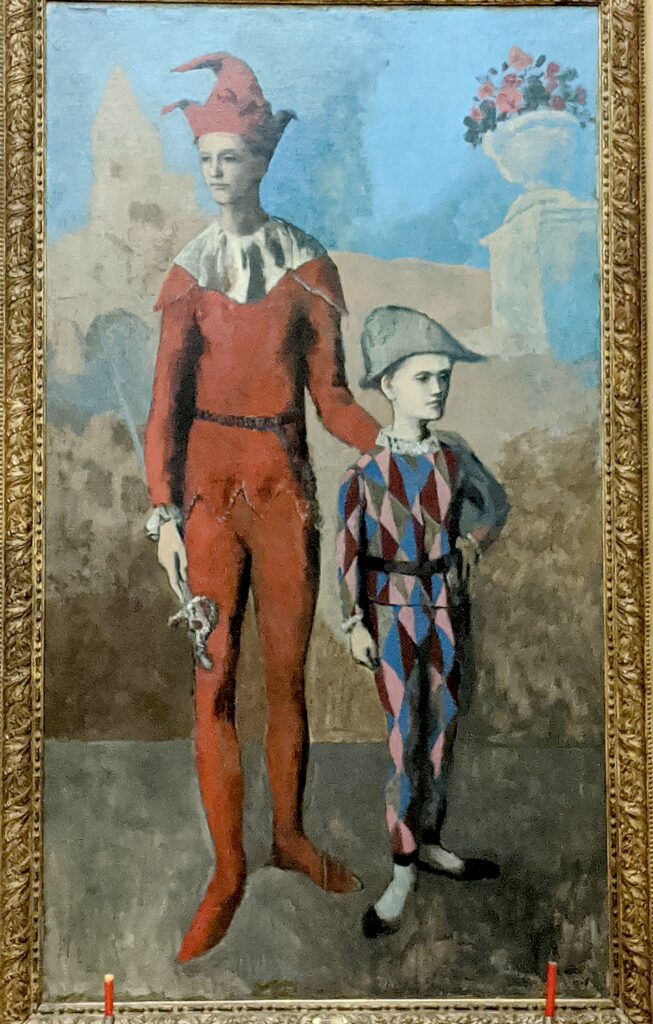
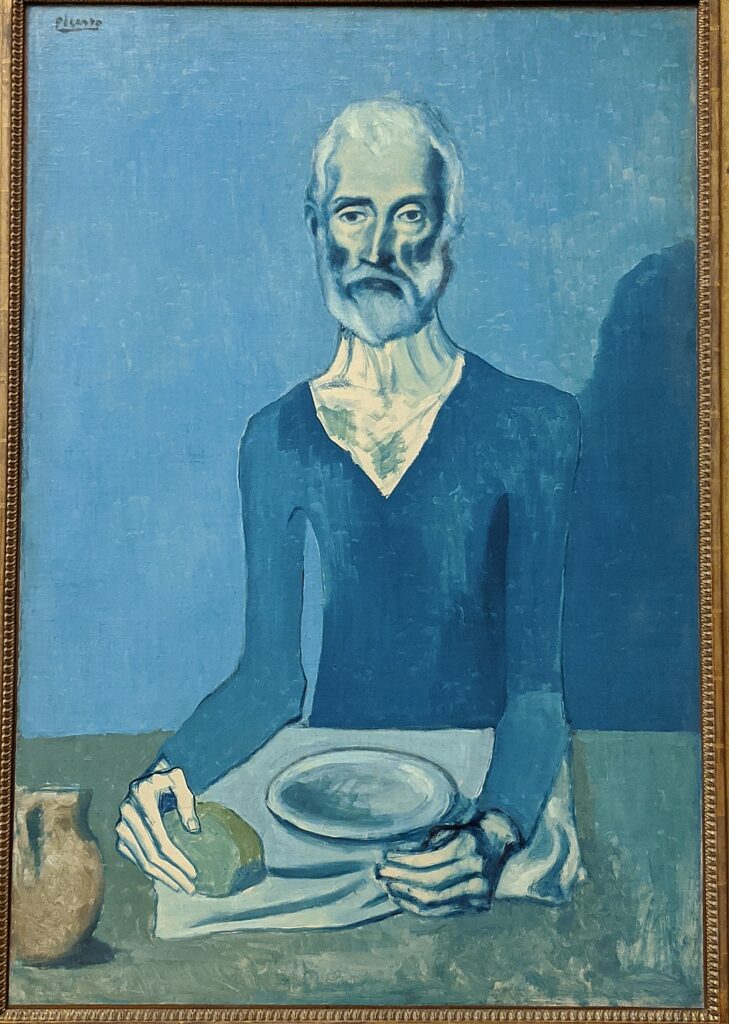
In 2012, the collection was moved to Philadelphia, to a building designed by Tod Williams Billie Tsien Architecture. The collection gallery replicates the original gallery building in Merion.

The Barnes Foundation, 2025 Benjamin Franklin Parkway, Philadelphia, PA 19130, 215-278-7000, www.barnesfoundation.org.
From here, we go to a family gathering at the mega-popular Zahav Restaurant (the Uber driver can’t believe we are getting in there since lines are usually around the block), an award-winning restaurant which elevates Israeli cuisine to gourmet status. The small plates menu is designed for diners to sample the variety of cultural influences on Israeli cuisine, from Eastern Europe to North Africa, from Persia to the Mediterranean. “Creamy, nutty hummuses, sizzling skewers of meat grilled over hardwood charcoal, and laffa breadar, the soul of Zahav, baked to order in a wood-fired Taboon.” (237 Saint James Place, 215-625-8800, zahavrestaurant.com).
My holiday happenings (see: Holiday Happenings Give Visitors to Philadelphia Even More to Enjoy) are bookended by visits to several of Philadelphia’s incomparable sites and attractions. Next: Independence Hall (you need to get a timed ticket, either walk up for free or in advance online for $1 fee, www.nps.gov/inde/planyourvisit/independencehalltickets.htm); a fabulous exhibit devoted to Supreme Court Justice Ruth Bader Ginsburg (Notorious RBG) at the National Museum of American Jewish History, located within the Independence Hall area (thru Jan. 12, at 5th & Market, mnajh.org, 215-923-3811); Philadelphia Magic Gardens (doesn’t need any holiday embellishments, 1020 South St., 215-733-0390, phillymagicgardens.org);and Franklin Institute (222 North 20th St., 215-448-1200, www.fi.edu), before having to pull myself away from Philadelphia.
Staying at The Roost East Market apartment hotel really enabled us to be part of the city, most of what we wanted to see within walking distance. It’s not hyperbole to say the comfort of a fully-equipped, gorgeously furnished apartment meets luxury amenities of a boutique hotel. All of the apartments feature full-size kitchens with cookware and utensils (I especially love not having to go out for breakfast) and king size beds. A third-floor is devoted to guest amenities including a well-equipped 24-hour fitness center, magnificent and comfortable lounge areas and library, a huge demo kitchen, a private screening room, an outside, 20-meter heated lap pool, barbecue area, landscaped terrace, community vegetable garden; and bike-share program. There is also 24-hour front desk and concierge, security (you need your card to access the elevator and public areas); and direct access to a parking garage. They even arrange dog-walking and grocery delivery services. (The Roost East Market, 1199 Ludlow Street Philadelphia, PA 19107, 844-697-6678, https://myroost.com/philadelphia/east-market/).
A Visit Philly Overnight Hotel Package includes overnight free parking and perks, and is bookable at Greater Philadelphia’s official visitor website, visitphilly.com, 800-537-7676 where you can explore things to do, upcoming events, themed itineraries and hotel packages.
______
© 2019 Travel Features Syndicate, a division of Workstyles, Inc. All rights reserved. Visit goingplacesfarandnear.com, www.huffingtonpost.com/author/karen-rubin, and travelwritersmagazine.com/TravelFeaturesSyndicate/. Blogging at goingplacesnearandfar.wordpress.com and moralcompasstravel.info. Send comments or questions to FamTravLtr@aol.com. Tweet @TravelFeatures. ‘Like’ us at facebook.com/NewsPhotoFeatures
